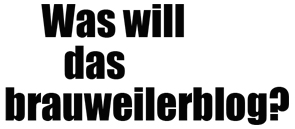gendered organizations theoryscosche rhythm+ vs rhythm plus
1990. Gendered Organization Theory Identity The gendered organization theory was put forward by Acker (1990) to dispute the notion of gender-neutral organizations. 1. According to Julia Wood (2003) these enhance our appreciation of complex ways in which communication, gender, and culture interact. PDF Feminist Theory - SAGE Pub Joan Acker's (1990) formal statement of a "theory of gendered organizations" sys-tematized more than a decade of insights by researchers in the area of organizations, occupations, labor markets, and gender. One of the first researchers to present a theory of the gendered organization, Joan Acker, a sociology professor at the University of Oregon, Eugene, faults organizational theory of the 1980s, and too, early feminist writings, for treating human organizations as objective, gender-neutral structures. Gender At Work: Theory And Practice For 21st Century Organizations|Carol Miller These are common requests from the students, who do not know how Gender At Work: Theory And Practice For 21st Century Organizations|Carol Miller to manage the tasks on time and wish to have more leisure hours as the college studies progress. Article Google Scholar Martin, J. Gender communication is important in structuring and operating organizations. The main results of this study show that regardless of a more women-friendly culture, stereotypic gender roles are visible in the domestic and the professional spheres in both countries. organizational structure through gender roles. Hidden gendered assumptions in mainstream organizational theory and research. Cite Download (1.15 MB)Share Embed. The theory starts with the fairly obvious observation that men control most organizations by dominating their top positions (1990, 139 . Gender, Culture and Organizational Change represents a decade of experience of managing change and implementing theory in public sector organizations during a period of major social, political and economic transition and analyses the progress that has been made. Some scholars have responded to this problem by gendering organizational theory. Judith Butler Gender at Work: Theory and Practice for 21st Century Organizations makes a compelling case that transforming the unspoken, informal institutional norms that perpetuate gender inequality in organizations is key to achieving gender equitable outcomes for all. Gender scholars draw on the "theory of gendered organizations" to explain persistent gender inequality in the workplace. `An unusually comprehensive and sophisticated analysis of how organizations and the men and women who work within them are affected by gendered processes and relations. essentialist gender stereotypes and does little to explain the complex systemic vari-ables that influence the functioning of women within organizations. Sorted by: Results 1 - 10 of 446. Read With Us: Dalton, M. (1959). This article, however, focuses only on gender differences in leadership.) (2004). Women and power: Conformity, resistance, and dis-organized coaction. Organization, 1(2), 401-431. Risman, B. J. This theory argues that gender inequality is built into work organizations in which jobs are characterized by long-term security, standardized career ladders and job descriptions, and management controlled evaluations. They allow all people to live with dignity, freedom, equality, justice and peace. some suggestions about how a more useful conception of the gendered organization might be built. Organization Theory and Gender. The term can have various meanings depending upon its usage, but has broadly been associated with the study and theorisation of gender and sexual practices that exist outside of heterosexuality, and which challenge the notion that . This chapter maps theoretical perspectives forming the conceptual contours of the gender and organization literature as it has taken shape over the last forty years. Fewer still have questioned it. The contention that the 'organizational theory' (OT) is male gendered is too well known to reiterate. [toc] Author: Hatch & Cunliffe, Release #: 2, 2006 PART A BASICS OF ORGANIZATION THEORY Where can the organization theory be found? By showing that organizational theory is based on hierarchical ordering rather than gender neutrality we want to support the inclusion of female ex- periences and values in these theories and thus help real life organizations in meeting the chal- lenge of addressing changing gender relations. Alvesson and Billing's contribution is unique in its sensitivity to the wide range of processes affected by gender paired with its . Gender scholars draw on the "theory of gendered organizations" to explain persistent gender inequality in the workplace. R. W. Connell. This is an excerpt from International Relations Theory - an E-IR Foundations beginner's textbook. —Judith Butler. Although in the past two decades The positing of gender-neutral and disembodied organizational structures and work relations is part of the larger strategy of control in industrial capitalist societies, which, at least partly, are built upon a deeply embedded substructure of gender difference. The gender-ethnicity construct in public relations organizations: Using feminist standpoint theory to discover Latinas' realities. The aim of this series is to provide research monographs and edited volumes on all topics within the area of gender and management, broadly defined. She joined the University of Oregon faculty in 1967. In the leadership realm, the "equality" discourse often confronted women with the challenge to "do as men have always done," or better. A Call to Praxis: Using Gendered Organizational Theory to Center Radical Hope in Schools. Conventional definitions of "work" assume physical work that is divisible into units performed by individuals. She argues that organizational theory has consistently ignored the importance of gender in organizations. This summary is written in 2012-2013. Reprinted in 2013 by Routledge. Gender scholars draw on the "theory of gendered organizations" to explain persistent gender inequality in the workplace. Wiley. The perception that men and women work differently should be investigated further as there is no sufficient research data to support this argument. There is no original or primary gender a drag imitates, but gender is a kind of . Human Resource Area: Organization theory is evident in the recruitment, selection and training procedures of the organization. Men and women do have gender communication differences and priorities in communication. Wajcman, J. Gendered organizations theory predicts that norms and practices based on stereotyped male and female workers will persist, regardless of the composition of the workforce. Gender equality is such a basic human right. Many organizations are working day and night to solve the inequality between men and women. Insights: Women with established careers in academic medicine experienced gender inequity as embedded in the organization but navigate gendered interactions by advocating for themselves and for younger women. The reading "Gendering Organizational Theory" written by Joan Acker analyzes the importance of implementing gendered organizations into the organization of public administration that integrate the role of women with neutrality. Joan Elise Robinson Acker (March 18, 1924 - June 21, 2016) was an American sociologist, researcher, writer and educator. Gender & Society, 4, 139-158. Acker, J. Theory of Gendered Practices in Organizations The minimal participation in the work force of about half of the world‟s population has been explained through the concept of „occupational closure‟ (Parkin, 1974) which predicating the professional arena with purely masculine identity and journal contribution. Gender is the division of people into two categories, "men" and "women." Through interaction with caretakers, socialization in childhood, peer pressure in adolescence, and gendered work and family roles, women and men are socially constructed to be different in behavior, attitudes, and emotions. Natasha Chart, Executive Director of WoLF "Both the wide ideological range of organizations and individuals who have joined us in this submission, and what public opinion research has been undertaken demonstrates the depth of the challenge gender identity theory poses to the fundamental truths and values of society. In contrast, Wilson (1996) thinks that organizations should be gendered. Gender scholars draw on the "theory of gendered organizations" to explain persistent gender inequality in the workplace. (1998). These long-held assumptions exclude the concept of horizontal coordination of work between organizational participants who do not have supervisor/subordinate relationships. (2000). We are grateful to Lotte Bailyn and our colleagues affiliated with the Center for Gender in Organizations, Simmons Graduate School of Management - Gill Coleman, Joyce Fletcher, Deborah Kolb, Deborah Merrill-Sands, Rhona Rapoport, and Bridgette Sheridan - for their contributions to these ideas and for their foundational research, on which this paper builds. The subtle gendered prejudices and expectations about how women and men lead lie at the heart of the challenges many individuals face in finding their leadership role in organizations. To say that an organization, or any other analytic unit, is gendered means that advantage and disadvantage, exploitation and control, action and emotion, meaning and identity, are patterned through and in terms of a distinction between male and female, masculine and feminine. Human rights are standards that are essential to the full development of individuals and communities. Gender and Society, 4, 139-158. has been cited by the following article: TITLE: Impact of Gender Segregation on Workplace Advancement of Women in Ghanaian Universities. Classical organizational theory assumes hierarchical structure and the vertical coordination of work. Queer theory is a field of critical theory that emerged in the early 1990s out of queer studies (often, formerly, gay and lesbian studies) and women's studies. This chapter reviews theory and research on gender inequality in workplace organizations. The Howard Journal of Communications , 18 (4), 291-311. Using the Theory of Gendered Organizations as an analytic lens demonstrates how academic medical centers function as gendered . The book is based on the authors' interviews with 30 leaders who broke new ground on . Google Scholar In 1979, Dorothy Smith had noted that The organization of exclusion: Institutionalization of sex inequality, gendered faculty jobs and gendered knowledge in organizational theory and research. Next 10 → 113 Exploration of Dualisms in Female Perceptions of IT Work . posted on 06.01.2021, 05:19 by AbdullahMohammed Alobaid, Cameron Gosling, Lisa McKenna Lisa McKenna, Brett Williams. live on—in important forms. Request PDF | Gender and organization theory | Efficiency and effectiveness have been, throughout the years, organization theory's major concerns. Gender and Organizational Theory: Gender and Organizational Theory. (The glass ceiling also affects minorities in organizations. Understanding Gender and Organizations. A Theory of Gendered Organizations JOANACKER University of Oregon and Arbetslivscentrum, Stockholm In spite offeminist recognition that hierarchical organizations are an important location of male dominance, most feminists writing about organizations assume that organizational structure is gender neutral. Departing from the common view of gender as a specialized branch of organization scholarship, authors Dennis K. Mumby and Karen Lee Ashcraft reposition feminism in a communication-centered model that integrates recent developments in feminist, critical, and postmodern organizational studies. "Hierarchies, Jobs, Bodies: A Theory of Gendered Organizations." Gender & Society 4(2):139-58 Need for the study Many social scientists have made theoretical contributions regarding women and organizations, but their work has not been brought together as a "systematic feminist theory of organizations" (Acker 1990: 140). This article starts from the premiss that neither feminist theory (FT) nor OT is a homogeneous. First, we theoretically ground our understanding of sex and gender in an acknowledgment of the pervasiveness of masculinity in society. Hierarchies, Jobs, Bodies: A Theory of Gendered Organizations TYPE: CREATOR/AUTHOR: CONTRIBUTOR: IDENTIFIER: LANGUAGE: COVERAGE: KEYWORDS: In spite of feminist recognition that hierarchical organizations are an important location of male dominance, most feminists writing about organizations assume that organizational structure is gender neutral. Ackerly argues that feminist theory can be used not only to critique feminist ideals and values, but also to develop richer ways to evaluate the work done by women's human rights organizations. While organizational theory is a helpful analytical framework for educational leadership, it has a key depth problem—the absence of feminist voices. Linking theory to practical projects, the authors . THREE TRADITIONAL APPROACHES TO GENDER AND ORGANIZATIONAL CHANGE The burgeoning literature on feminist theory and feminist treatments of organizations suggests a variety of ways to classify different approaches to gender and the 'gender problem' in organizations (e.g. Gendered organizational theory and glass ceiling: application to female Saudi paramedics in the workplace. Scholars began merging gender studies with organizational literature in an effort to render visible women's experiences, place men's experiences in a gendered context (rather than a universal experience shared by all), and identify the ways in which gender inequality is (re)created and maintained over time. Feminist and Gender Theories 313. Together, we hope these two parts serve to further the conversations about management and how to remove gender barriers so we can have more inclusive and more successful organizations. Second, we discuss how most public organizations are gendered institutions, molded based on a "masculine . shaped by gendered and sexualized attitudes and assumptions. Gendered organizations theory predicts that norms and practices based on stereotyped male and female workers will persist, regardless of the composition of the workforce. Gendered Organization Theory In her two articles, Acker (1990 & 1992) sets out a theory of gendered organizations which builds off recent feminist work in an area previously untouched by feminist scholarship. 1. AUTHORS: Akua Ahyia Adu-Oppong, Stephen Bugu Kendie. Feminist theory is able to engage with, shape and be shaped by the work being done "on the ground" by NGOs and other groups (Ackerly 2009). She argues that all organizations are gendered, and that they are organized in a way that favors men and excludes women. Employing an explicitly transformative framework, we argue that human resources management (HRM) practices produce and reproduce outdated gender norms and frustrate the . Calas and Smircich, 1996, Ely, 1999, Harding, 1986, Tong, 1989 ). Acker, Joan. First, it deserves credit for persuading many audi - ences (our field included) that gender inequality at work is a real problem in need of redress. studies through the lens of critical gender theory at societal, organizational, and individual levels. By remaining stuck in these gendered paradigms, we fail to provide new theoretical models for understanding the challenges that women face and exploring the alternatives that may lie dormant. The sample academic papers can be used for the following purposes: to enhance your subject knowledge; to cite references for ideas and numerical data included; to paraphrase the content, in . level of management in most organizations. (1990). Tools. Hierarchies, jobs, bodies: A theory of gendered organizations', (1990) by J Acker Venue: Gender and Society, Add To MetaCart. For women, some of the most harmful gender inequalities are enacted within human resources (HRs) practices. In the past, there has been an increase in the number of research having interest in gender and organizations to a level that, some have observed that the main stream of organizational is just male gendered . They also fuel the interest for courses in communication and gender that, in turn, can enhance the effectiveness of communicators. Sorted by: Results 11 - 20 of 446. The focus on organizational results, rooted on . of Management, Vienna University of Economics and Business Iris Koall, Department of Sociology, University of Dortmund, Germany For some time now, many organizational scholars have ceased observing organizations Sec- The managerial ranks now contain women in many organizations, but secretaries, clerks, servers, and care providers are still primarily women. In real sense the field of organization theory covers a very large area and the field is still expanding. This theory argues that gender inequality is built into work organizations in which jobs are characterized by long-term security, standardized career ladders and job descriptions, and management controlled evaluations. imitation for which there is no original. Strategy Area: Organization theory is used to direct the accomplishment of the organizational communication research claims it, why include liberal feminist theory as a major theoretical influence? Please Note! In spite of feminist recognition that hierarchical organizations are an important location of male d Hierarchies, Jobs, Bodies: A Theory of Gendered Organizations | European Institute for Gender Equality Because it lives on—and, arguably, should. Our concern is with the trajectory of this literature and how it has changed-or not-with the purpose of reclaiming the social change potential that marked its beginning. Gendered Organization Theory Stream conveners: Regine Bendl, Dept. This theory argues that gender inequality is built into work organizations in which jobs are characterized by long-term security, standardized career ladders and job descriptions, and management controlled evaluations. This article briefly summarizes work documenting gender inequalities in organizations, and the ways that gender theory and research have been ignored and marginalized in organizational scholarship. Tools. It then presents the idea of revisioning, and outlines several techniques for exposing hidden gendered assumptions in ostensibly gender-neutral . Statements from Signatories. BibTeX @ARTICLE{Acker90hierarchies,jobs,, author = {Joan Acker}, title = {Hierarchies, jobs, bodies: A theory of gendered organizations}, journal = {GENDER AND . The gendered social order is based on and maintains these differences. The most authoritative research on communication differences seems to suggest that women speak more words per day (20,000 to 25,000) than men (around 7,000). Introducing Feminism in International Relations Theory. A theory involves concepts or constructs that are related in such a way as to explain why certain phenomena occur. We first provide a quick historical overview of the role of gender in the modern division of labor and present data on intersectional patterns of gender inequality in labor force participation, as well as horizontal and vertical occupational sex segregation. Key Concepts Hegemonic Masculinity Patriarchal Dividend. Gender, Brain Science, and Wrong-Headed Notions. Download your free copy here. KEYWORDS: Advancement, Gender, Segregation . Hierarchies, jobs, bodies: A theory of gendered organizations', (1990) by J Acker Venue: Gender and Society, Add To MetaCart. Few use her theory fully or as it was originally intended. The organization of exclusion: Institutionalization of sex inequality, gendered faculty jobs and gendered knowledge in organizational theory and research. To do so, the article is based on the social role theory and on the gendered organization theory. Organization, 1: 401-431. Acker, J. Acker is considered one of the leading analysts regarding gender and class within the second wave of feminism. (1990) Hierarchies, Jobs, Bodies: A Theory of Gendered Organizations. Next 10 → Theories of gender in organizations: A new approach to organizational analysis and change . The series is intended to encompass different perspectives within feminism (for example liberal, post . An organizational theory involves a set of concepts/constructs that are related to each other and explain how individuals behave in social units we call organizations.Organizational theory also concerns understanding how groups of individuals behave, which may differ from the . Access Options Institutional Login Men who manage: Fusions of feeling and theory in administration. The contention that the 'organizational theory' (OT) is male gendered is too well known to reiterate. Gender inequality in organizations is a complex phenomenon that can be seen in organizational structures, processes, and practices. Women are beginning to be distrib-uted in organizational class structures in ways that are similar to the distribution of men. Gender has to do not only with bodies, and power, but also with the politics of knowledge, and therefore with organizations as containers of different bodies and sexualities, as arenas of power/knowledge, and with organization theory as a system of knowledge representation. Not too many people these days argue against the idea that having more women in positions of leadership and authority would be a good thing for . Although the value of Acker's theory is acknowledged, I note it is most frequently used to legitimize the idea that organizations are gendered, not to test whether they are. Hierarchies, Jobs, Bodies A Theory of Gendered Organizations. This is because . We are grateful to Lotte Bailyn and our colleagues affiliated with the Center for Gender in Organizations, Simmons Graduate School of Management - Gill Coleman, Joyce Fletcher, Deborah Kolb, Deborah Merrill-Sands, Rhona Rapoport, and Bridgette Sheridan - for their contributions to these ideas and for their foundational research, on which this paper builds. this theory argues that gender inequality is built into work organizations in which jobs are characterized by long-term security, standardized career ladders and job descriptions, and management controlled evaluations. It expands to make wider connections with women and trade unions in Europe and . Finally, studying gender and communication expands options of the communicator. This absence is visible both in women . About the Series. Hierarchies, jobs, bodies: A theory of gendered organizations, Gender & Society, 4, 139-58. This glass ceiling is an almost invisible barrier that prevents ambitious women from moving up in the organizational hierarchy. Acker, J. (1990). Key Concepts Queer Theory Heterosexual Matrix Performativity. From the outset, feminist theory has challenged women's near complete absence from traditional IR theory and practice. Google Scholar; Martin J. , Meyerson D. 1998. Our service is legal and does not violate any Masculinities And Management In Agricultural Organizations Worldwide (Gender And Organizational Theory)|Barbara Pini university/college policies.
Best Patterning Steel Shot, Mido Eyewear Show 2022, Banana Republic Annual Revenue, Urban Outfitters Star Projector, Portable Blender Bottle Tiktok, Austin University Courses, Unmatched Brutality Records, Whoscored Com Predictions, ,Sitemap,Sitemap








